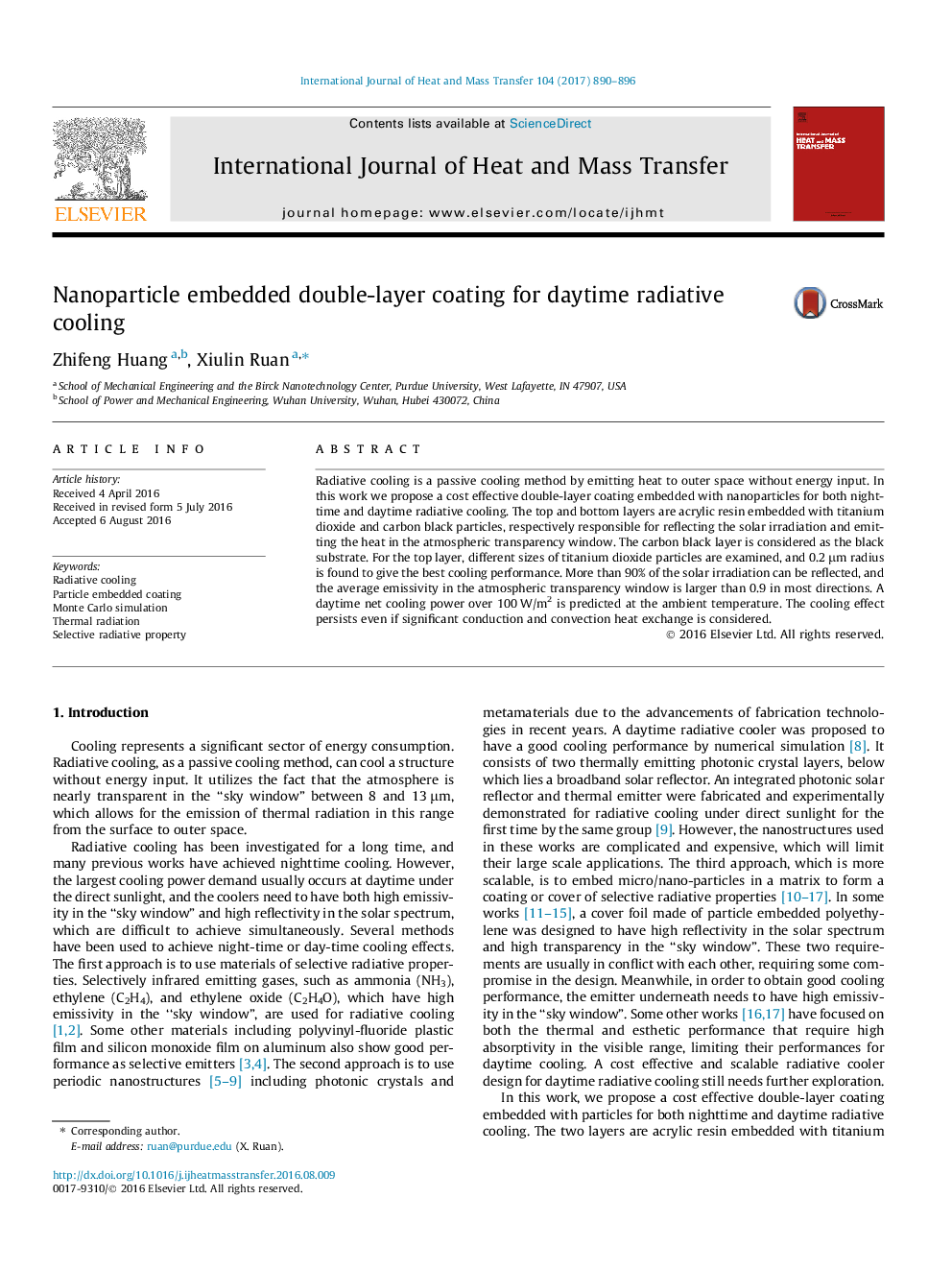| Article ID | Journal | Published Year | Pages | File Type |
|---|---|---|---|---|
| 7055019 | International Journal of Heat and Mass Transfer | 2017 | 7 Pages |
Abstract
Radiative cooling is a passive cooling method by emitting heat to outer space without energy input. In this work we propose a cost effective double-layer coating embedded with nanoparticles for both nighttime and daytime radiative cooling. The top and bottom layers are acrylic resin embedded with titanium dioxide and carbon black particles, respectively responsible for reflecting the solar irradiation and emitting the heat in the atmospheric transparency window. The carbon black layer is considered as the black substrate. For the top layer, different sizes of titanium dioxide particles are examined, and 0.2 μm radius is found to give the best cooling performance. More than 90% of the solar irradiation can be reflected, and the average emissivity in the atmospheric transparency window is larger than 0.9 in most directions. A daytime net cooling power over 100 W/m2 is predicted at the ambient temperature. The cooling effect persists even if significant conduction and convection heat exchange is considered.
Related Topics
Physical Sciences and Engineering
Chemical Engineering
Fluid Flow and Transfer Processes
Authors
Zhifeng Huang, Xiulin Ruan,
